One of the best games of Yates’ career was the victory with Black in the 1930 San Remo against Milan Vidmar. Yates had a fantastic result at San Remo 1930. No-one could keep pace with Alekhine of course, but 5th place in this company was something to be proud of!
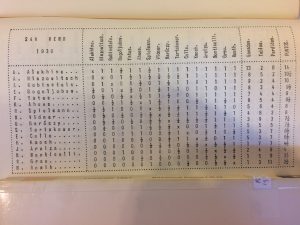
Vidmar was a very difficult opponent for Yates. Until this game, Yates had lost his previous 4 Black games against him! However, 61 moves of tough fighting and a moment of glorious inspiration on the 36th move gave him his first and only win of his career against this opponent.
Vidmar,Milan Sr – Yates,Frederick
San Remo 1930
1.d4 Nf6 2.c4 e6 3.Nf3 d5 4.Bg5 Nbd7 5.e3 Be7 6.Nc3 0–0 7.Rc1 c6 8.Bd3 a6 9.0–0 dxc4 10.Bxc4 b5 11.Bd3 c5 12.a4 c4
12…bxa4 13.Nxa4 cxd4 is how modern players do it. As you may have seen in other articles on this blog however (https://matthewsadler.me.uk/chess-for-life/c5-c4-dogma/ and https://matthewsadler.me.uk/defence/kingside-defence-using-queenside-advantages/), …c5-c4 is not necessarily a bad move!
13.Bb1 Nd5
An improvement on an earlier game of Yates’: 13…Qb6 14.e4 (14.Ne5 followed by Qf3–h3 Stockfish) 14…h6 15.Be3 Ng4 16.Bf4 Bb7 17.e5 f5 18.h3 Rf7 19.d5 b4 20.a5 Qxa5 21.dxe6 Rff8 22.Qxd7 Bxf3 23.gxf3 bxc3 24.Qxe7 cxb2 25.Rxc4 Rae8 26.Qc5 1–0 (26) Capablanca,J-Yates,F Karlsbad 1929
The text reduces White’s attacking chances by exchanging off 2 sets of minor pieces
14.Bxe7 Qxe7 15.axb5
15.b3 N7b6 16.bxc4 Nxc3 17.Rxc3 Nxc4 18.Ne5 Nxe5 19.dxe5 g6 20.Qc2 Bd7 21.Rc7 Rac8 22.Rd1 Rxc7 23.Qxc7 Rc8 24.Qb7 bxa4 25.h3 Qe8 26.Rxd7 Rc1+ 27.Kh2 Rxb1 28.Qc7 Rc1 29.Qd6 Rc8 30.Re7 Qc6 31.Ra7 Qxd6 32.exd6 Rd8 33.Rxa6 a3 34.e4 e5 ½–½ Euwe,M-Spielmann,R Amsterdam 1932
15…Nxc3 16.bxc3 axb5
17.e4 Rd8 18.e5 Bb7 19.Nd2 Ra3 20.f4 g6 21.Be4 Nb6 22.Bxb7 Qxb7 23.Qe1 Nd5 24.Ne4
24…Ra2 25.Qh4 Rda8 26.Rf2 Kg7 27.Rcf1 Qe7 28.Qg3 Kh8 29.Ng5 Kg7 30.Ne4
30.f5 Rxf2 31.f6+ Nxf6 32.Qxf2 Ng4 33.Qxf7+ Qxf7 34.Rxf7+ Kg8 35.Rf1 is Stockfish’s suggestion leading to a draw
30…Ra1 31.f5 exf5 32.Rxf5 b4
Now it starts!
32…Ne3 33.Qxe3 gxf5 34.Nf6 h6 35.Nh5+ will at least draw (Winter)
33.R5f2
33.cxb4 R8a3 34.R5f3 Rxf1+ 35.Kxf1 Ra1+; 33.Nd6 bxc3 34.Rxf7+ Qxf7 35.Nxf7 c2 wins
33…R8a3
Right idea, but a very risky implementation! This is where I started to analyse.
a) 33…b3 34.Nd6 Qe6 My first reaction was to look at this approach: forget about winning the c-pawn and just queen the b-pawn. It’s not a bad thought but Stockfish thinks he can hold things together with tactics. 35.h3 Rxf1+ 36.Rxf1 b2 37.Qf2 Ra2 38.Rb1 Nxc3 39.Rxb2 Ra1+ 40.Kh2 Nd1 41.Qe1 when a draw is coming!
b) 33…Nxc3 34.Nxc3 Rxf1+ 35.Rxf1 Ra3 36.Rc1 bxc3 37.Rxc3 Ra1+ 38.Kf2 Qb7 is Stockfish’s way.
Back to Yates’ risky choice!
34.Nd6
Threatening both Rxf7+ and Nf5+, while also attacking the loose pawn on c4
34…Nxc3
With 2 big threats:
- …Ne2+ discovering an attack on the queen on g3
- …Rxf1+ when Kxf1 runs into the unexpected …Ra1+ mate!
35.Qg4
35.Rxf7+ Qxf7 36.Nxf7 Ne2+
35.Nf5+ Kf8 36.Nxe7 Rxf1+ 37.Kxf1 (37.Rxf1 Ne2+ 38.Kf2 Nxg3) 37…Ra1#
An unexpected mate!
35.Qf3 Ra7 36.Nc8 Qe6 37.Nxa7 Rxa7 intending …Nd5, covering f6 and preparing to let the queenside pawns roll 38.Rc2 Stockfish, intending to capture on c3 with only a slight disadvantage
35…h5 36.Qc8
with multiple threats: Rxf7+, Ne8+ followed by Nf6 and the simple Qxc4.
36.Nf5+ Kf8 37.Nxe7 Rxf1+ 38.Rxf1 hxg4 39.Nxg6+ Ke8 wins
36…Ne2+
An absolutely stunning resource. It took me some minutes to be sure of the point behind this move.
37.Kh1
37.Rxe2 Qh4 wins on the spot
a) 38.Qf5 Qxd4+ 39.Qf2 Rxf1+ 40.Kxf1 Ra1+ 41.Re1 Rxe1+ 42.Kxe1 Qxe5+;
b) 38.Ref2 Rxf1+ 39.Kxf1 (39.Rxf1 Qxd4+ 40.Kh1 Ra1 Always surprising when the offer of an exchange leads to a clear win!) 39…Ra1+ 40.Ke2 Ra2+
c) 38.g3 Qxd4+
c1) 39.Kg2 Qd5+
39…Rxf1 40.Ne8+ This intermediate move was missed by Winter (40.Kxf1 Ra1+ 41.Kg2 Qg1+ 42.Kh3 Qf1+ 43.Rg2 Ra2 wins according to Winter) 40…Kh7 (40…Kh6 41.Nf6 is a draw) 41.Kxf1 Ra1+ 42.Kg2 Qg1+ 43.Kh3 Qf1+ 44.Rg2 holds for White as there is no time for …Ra2
40.Ne4
40.Kg1 Rxf1+ 41.Kxf1 Qh1+ 42.Kf2 Rf3#; 40.Re4 Rxf1 41.Kxf1 Qd3+ wins
40…R3a2
41.Rff2 Rxe2 42.Rxe2 Qd3 43.Kf2 Rh1 44.Qh3 c3 wins
c2) 39.Ref2 R3a2 40.Kg2 Rxf1 41.Rxa2 b3
I was pleased with myself for finding this one. Stockfish finds it instantly!
41…Rg1+ 42.Kh3 Qg4+
42…b3 43.Ra8 (43.Ne8+ Kh6 44.Nf6 bxa2 45.Qh8+ Kg5 46.Ne4+ Kf5 47.Nd6+ Qxd6 48.exd6 a1Q turned out to be winning for Black!) 43…Qg4+ leads to the same thing. “and wins” according to Winter, but that’s not quite right!)
43.Qxg4 hxg4+ 44.Kxg4 b3 45.Ra8 b2 46.Ne8+ Kh6 47.Nf6 b1Q 48.Rh8+ Kg7 49.Rg8+ is the draw I struggled to get past for a while
42.Ra8
42.Ne8+ Kh6 43.Nf6 bxa2 44.Qh8+ Kg5 45.Nh7+ (45.h4+ Kf5 46.Qc8+ Kxe5 47.Qe8+ Kxf6 48.Qh8+ Ke7 49.Qxd4 a1Q) 45…Kf5 46.Qf6+ Ke4
42…Rf2+ 43.Kh3 Qg4+
44.Qxg4 hxg4+ 45.Kxg4 b2 46.Rb8 c3 47.Ne8+ Kh7 48.Nf6+ Rxf6 49.exf6 c2 wins!
37…Qe6
Covers both the threat against the c4 pawn and also White’s idea of Ne8–f6 when White threatens both Qh8+ and Ng8+ forking the king and queen. This is possible now as 36…Ne2+ drove the White king into the corner which means that 37.Rxf7+ is met simply by 37…Qxf7!
38.Qd8
Presumably missing Black’s unexpected next move, after which all White’s threats are neutralised
38.Qxc4 Qxc4 39.Nxc4 Rxf1+ 40.Rxf1 Rc3 41.Nd6 b3 simply wins for Black
38.Qb7 Ra7 39.Qxb4 c3 is very unpleasant for White. The amazing Black knight hangs on e2 crippling White’s position! 40.Qc5 Stopping …c2 40…h4 Threatening to push White’s position to breaking point with …h3. I was amazed to see how bad things are here: Stockfish gives White -5.29!
38…Ra8
39.Qg5 Nxd4 40.Nxf7
Threatening Qh6+
40…Nf5 41.Nd6
41.Rxf5 Qxf5
41…Nxd6 42.exd6 b3
42…Rxf1+ 43.Rxf1 Qxd6 was even simpler. Yates’ realisation of his advantage isn’t flawless, but he gets the job done eventually.
43.h3 b2 44.Qb5 c3 45.Qb7+ Kg8 46.d7 Rd8 47.Qb4 Rxd7 48.Qxc3 Rxf1+ 49.Rxf1 Rb7 50.Rb1 Rb3 51.Qc2 Rb8 52.Qc3 Qb6 53.Qc4+ Kg7 54.Qc3+ Kh7 55.Qe5 Rb7 56.Qe2 Qb4 57.Qf2 Qc3 58.Qf1 Kg7 59.Kh2 Qe5+ 60.Kh1 Rc7 61.Qd1 Qf4
0–1
A great grandmaster fight!
Postscript
While browsing through books in the wonderful Max Euwe library in the centre of Amsterdam, I came across the tournament book of San Remo 1930. I saw that Yates’ countryman J.H Blake had annotated this win against Vidmar:
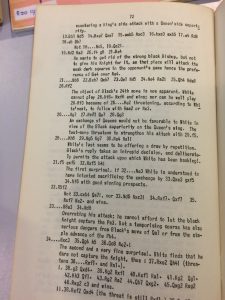
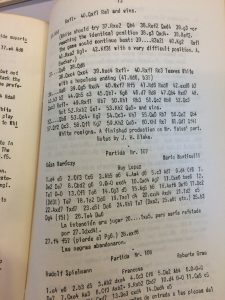
Postscript 27th November 2016
Colin Patterson sent me a couple of fascinating finds which I just have to share with you. First of all, annotations to this game by the Russian player Romanovsky from another San Remo tournament book:
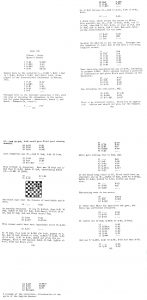
Especially nice is the tribute to JH Blake (whose annotations I mention in the article) Colin found in the Times of 19th June 1939:

His name was completely unknown to me but he seems – just like HE Atkins mentioned in the article – to have been one of those amazing players who could just pick up the game from time to time and still compete with the world’s best! If anyone else knows any more about him, then I’m extremely interested!



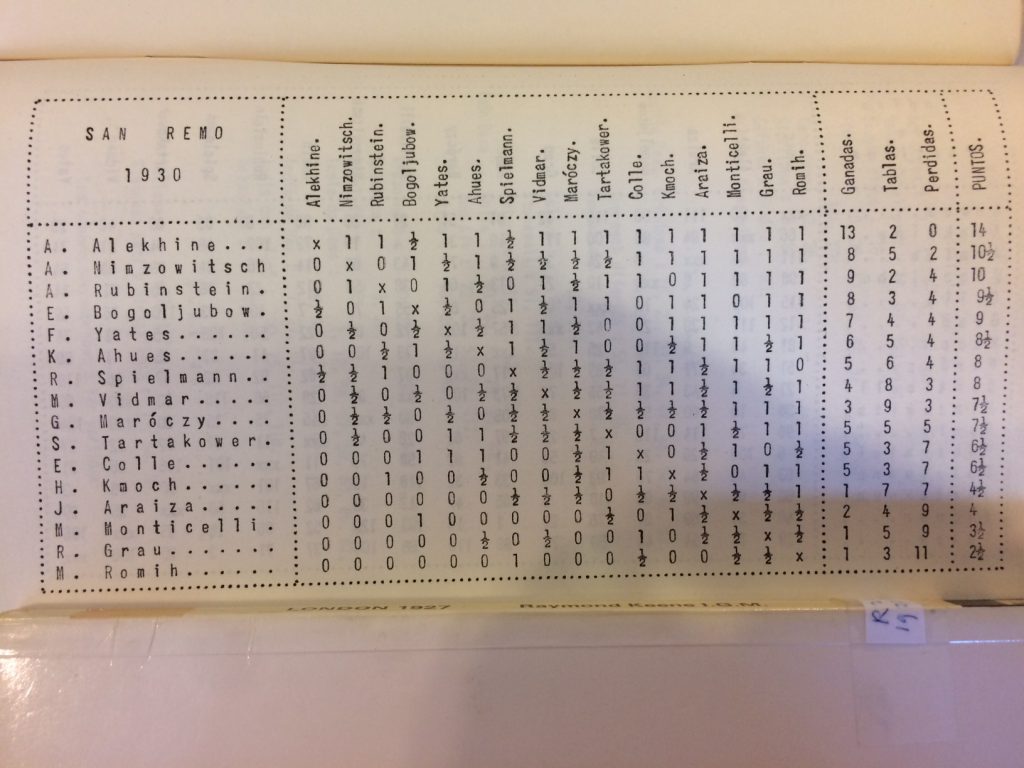
Joseph Henry Blake (3/2/1859-11/12/1951) – a railway clerk by profession. He appears to have stopped playing in international tournaments around 1930. Wikipedia has an article about him, and there is also a nice article with photo at the Kingston Chess Club website – http://www.kingstonchess.org.uk/about/club-history.
Hi Colin, thanks for that! I’d seen the Wikipedia article, but not the Kingston Chess Club article! Best Wishes, Matthew